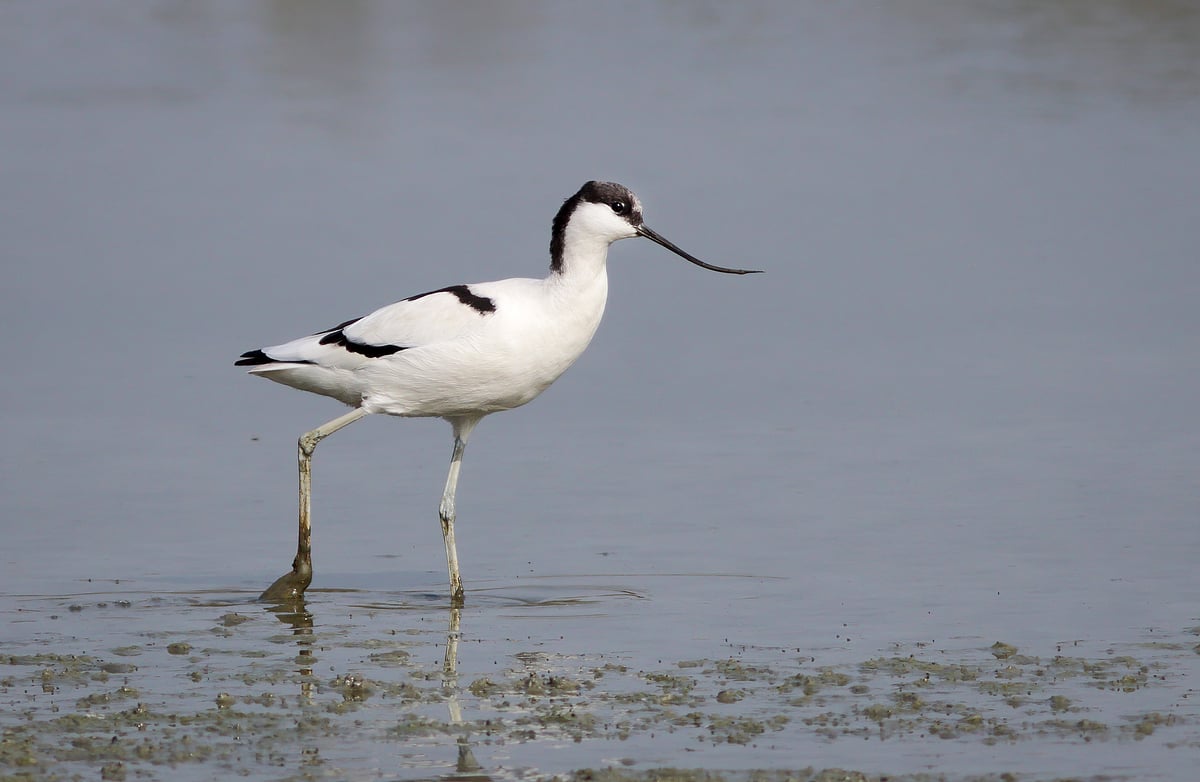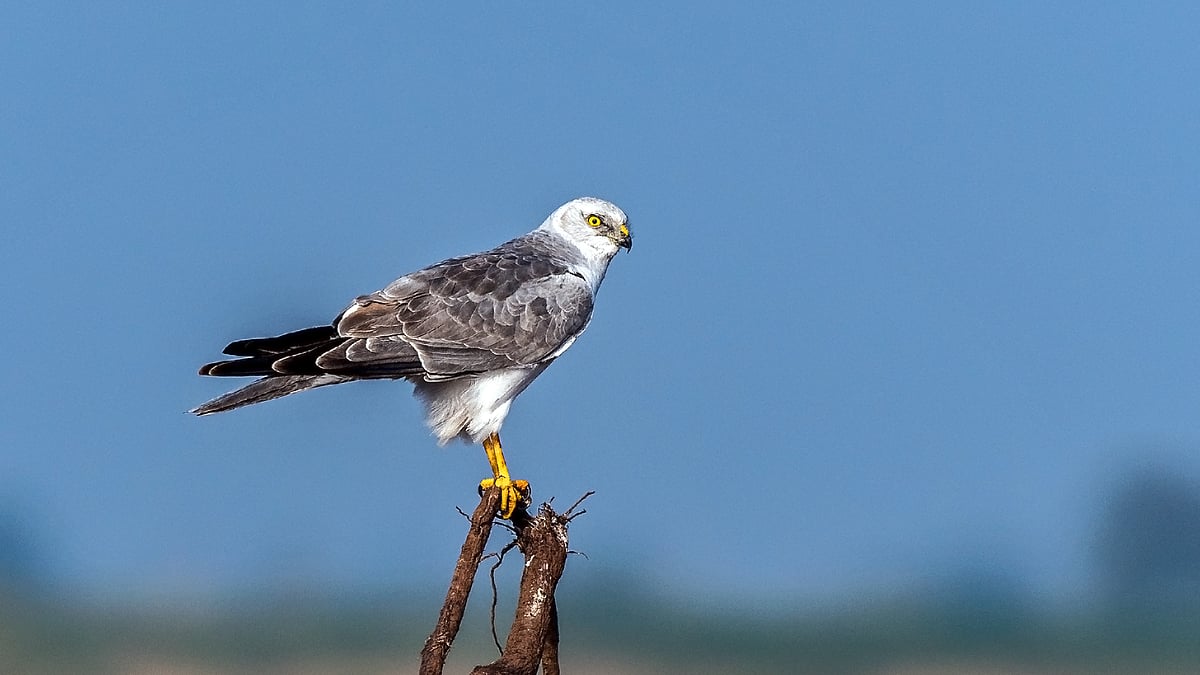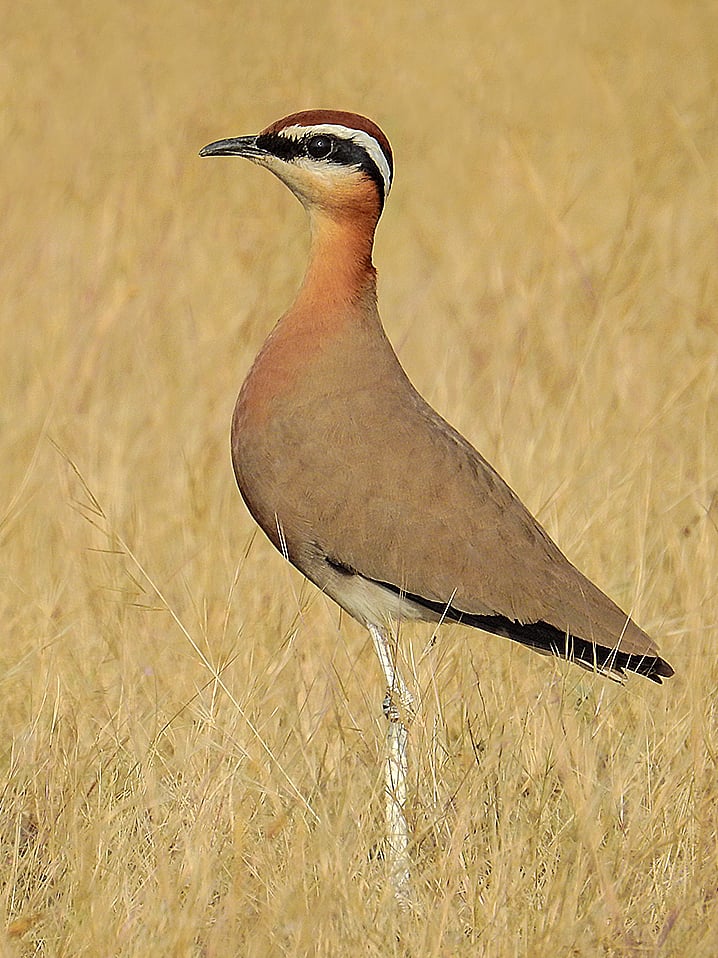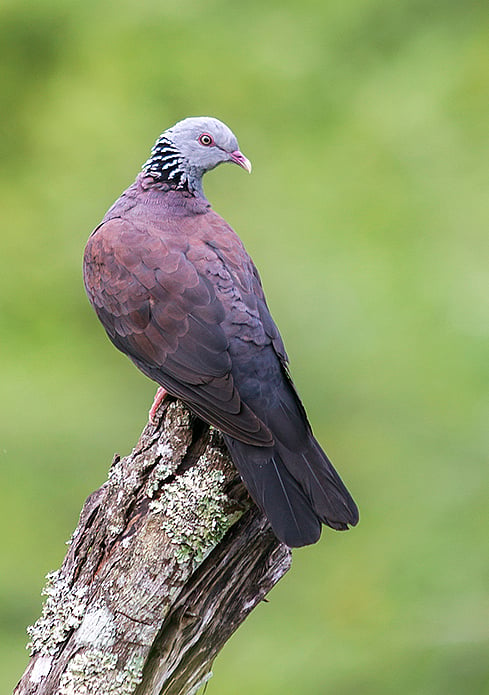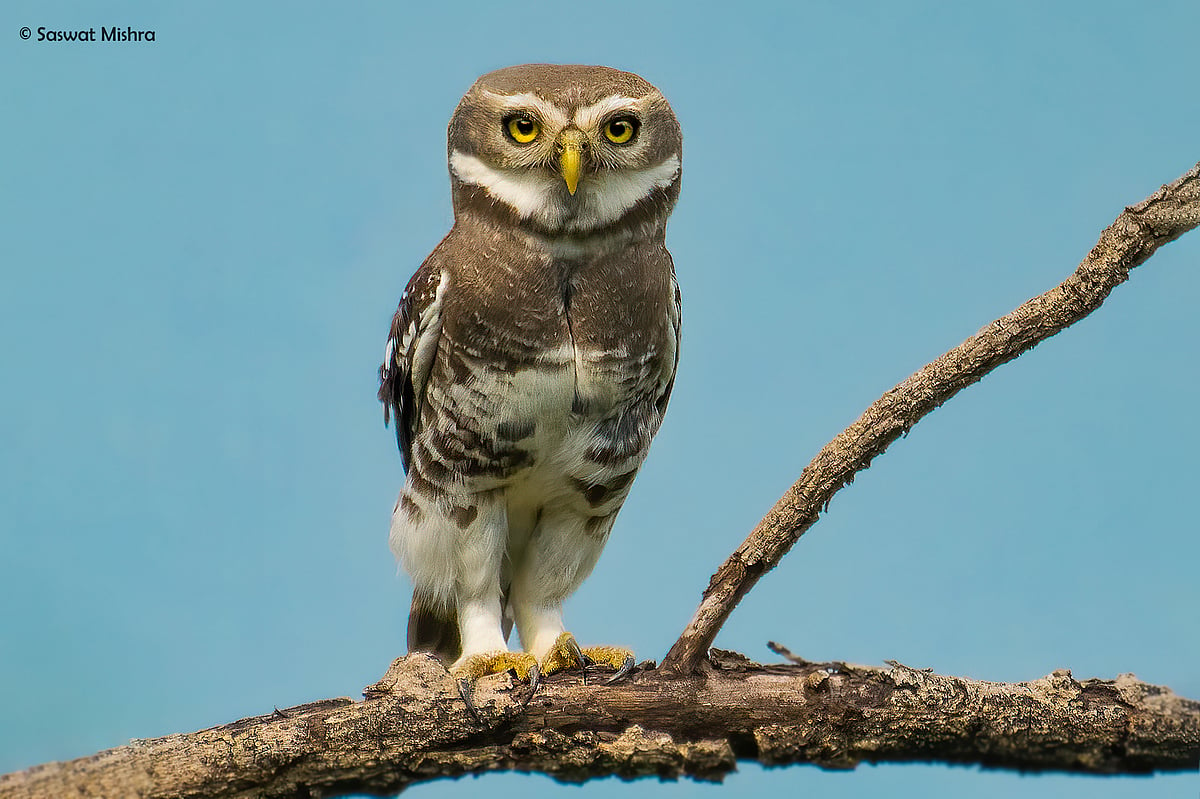No blue skies, too few Neelkanths—another canary in India’s coal mine?
The uncommonness of some ‘common Indian birds’ was a sobering trend in the 2023 ‘State of Indian Birds’ report

I was perhaps in the 4th standard. We were on the school ground playing. The break ended—the bell had already rung—but I didn’t move. I had noticed a bird in the sky. It wasn’t moving either, it was still—suspended in the air.
All of a sudden, it fell, like a stone—and within a split second, hit the ground.
I was shocked! I thought it was injured, perhaps even dead—and I ran towards it.
But just as I was getting close, it suddenly took off. It seemed to struggle a bit… but off it flew. Shaking off my surprise, I realized I was the only one left on the playground. I was not sure how much time had passed, but for sure I was late. I ran back to class.
The memory remained with me, though.
It was only a few years later, when I started birdwatching in earnest, that I was able to identify the bird as the black-winged kite—a stunning small bird of prey, about the size of a crow, with red eyes and overall grey-white body, with black on its wings.

I was lucky to have witnessed the final part of a long hunt that was perfected over millennia. That bird had been wind-hovering — remaining in one location, suspended in air, only to fall like a stone, breaking its fall at the very last split second to catch its unsuspecting prey. One of my personal favourites, seen easily perched along telegraph lines and electricity poles in the open agricultural landscapes outside cities, I always perceived it as a common species—until I realised in the last few years that I wasn’t seeing them that much.
The 2023 State of Indian Birds (SOIB) report last autumn confirmed my fears: the once-common black-winged kite is now categorised as ‘declining’, meaning it is one of the species likely to face conservation challenges soon.
India, occupying only 2.4 per cent of the total global land area, supports an astounding 1,361 bird species, equivalent to over 13 per cent of the global bird diversity. To come up with the second State of Indian Birds report for a country that is as hugely diverse in all respects could have been no mean challenge.
As the report says by way of introducing itself: ‘The State of India’s Birds report is a periodic assessment of the distribution range, trends in abundance, and conservation status for most of the bird species that regularly occur in India… Birds are excellent indicators of the state of our natural world and are potent cultural symbols of nature. As a comprehensive, national-level assessment, the report points the way towards conservation needs of India’s birds.’
The first SOIB was released in 2020. This second one, published 25 August 2023, had help from 13 partner organisations and 50 bird experts to analyse a humungous 30 million observations, uploaded by over 30,000 birdwatchers on ebird.org—a platform that gathers observations from birdwatchers across the world and which has become extremely popular in India—and assessed 942 bird species.
While there have been other such reports, this is the first time that such a report has been prepared using ebird data, a first amongst countries of the global south! The 30 million observations also included Indian birders retrospectively digitising their past birding lists from yellowing notebooks.
The 942 species covered were selected based on their importance (for example, endemics — meaning the species found in a single defined geographic location) and on the availability of data (certain important groups of species, like the primarily nocturnal owls and nightjars, sadly could not be assessed well due to lack of adequate data).
Still, what we do have is a story that should give us twitchers ‘furiously to think’: Unfortunately, all is not well with our birds.
While a few generalist species—like the feral rock pigeon and the national bird, the Indian peafowl—are doing well and other well-known species like the baya weaver are relatively stable, the larger picture is rather sobering. Based on data availability and other parameters, out of the 942 species studied, long-term trends (over three decades), current annual trends (over the past eight years) and range size (within India in the last five years) were also reviewed.
So far, the International Union for the Conservation of Nature (IUCN) Red List of Threatened Species has been the only go-to list for conservation prioritisation and action. Based on the above three criteria and the IUCN Red list, the SOIB has now classified the 942 species thus:
178 ‘high priority’ – needing immediate action
323 ‘moderate priority’, and
441 ‘low priority’.
Importantly, 17 species have been identified for re-assessment by IUCN, 16 of which are for a higher threat category. Two species have been recommended to be ‘upgraded’ from ‘least concern’ to ‘endangered’—the northern shoveller and Baillon's crake—which is a jump of three threat categories; 11 species are going from ‘least concern’ to ‘vulnerable’.
So, what exactly is happening to our birds? And why does all this matter?
Well, what happens to the birds also happens to us.

The Indian roller—popularly known as neelkanth for its stunning blue plumage and associated with the worship of Shiva and Shakti—is a spectacular species of our open natural systems: grasslands, semi-arid, agrarian landscapes. Known for its acrobatic insect catching, thousands of rollers are captured every year because of a superstition that sighting this bird during Dussehra will absolve the observer of all sins. As if illegal hunting was not enough…
The SOIB now finds Indian roller populations declining in both current and long-term time frames. So much so that though classified as being of ‘least concern’ in the IUCN Red List, the SOIB recommends its status be revised to ‘near-threatened’.
I got in touch with Dr Pia Sethi, an ecologist and senior fellow at CEDAR (the Centre for Ecology Development and Research), who said: ‘The biggest shock is how uncommon the common birds really are! After all, who would have thought the day would come when the Indian roller would be in rapid decline—so much so that it would require re-assessment of the IUCN Red List.’
What is the status of the humble house sparrow, one may wonder, given we have seen its stark decline, especially in cities, as deeply troubling observers and experts in recent years? I checked, and the data is inconclusive over the long-term (that is, over the past three decades), though the report confirms a continuing decline in current annual trends.
The roller keeps insect populations in check in our agricultural landscape, a farmer’s friend; sparrows feed chiefly on grain—but its absence argues against a healthy urban wildscape. What is common here? What could possibly impact both, rather differently evolved species?
Environmental pollutants—including pesticides, rodenticides, heavy metals, certain medical and even veterinary drugs directly and indirectly impact most birds.

But then, this is just not about birds. Dr Rajah Jayapal, senior principal scientist, Salim Ali Centre for Ornithology and Natural History (SACON), responded over email: "Birds are at the apex of the food chain. Pesticides, rodenticides and other chemical pollutants reduce populations of bird prey, like insects, rodents, lizards, frogs and snakes; and they also build up in them. Similarly, they leave residues in fruits, vegetables, grains—all parts of the food chain. Finally, they build up in birds too, negatively impacting bird populations. All these are already known to be potential health hazards to humans… This spells disaster for humans too!”
If the environment we are vitiating is killing birds, it’s unlikely we—also at the apex of our own omnivorous food chain—are escaping unscathed. It is merely a matter of time and magnitude of build-up. Meanwhile, plastics are causing direct deaths of birds (for example, seabirds) and microplastic is likely affecting their physiology and survival—and ending up in the bodies of newborn babies!
Decline in bird populations unfortunately has been a worldwide phenomenon. Worldwide, 49% of bird species are declining, per the IUCN Red List—and the SOIB only confirms this unfortunate global trend for India.
According to the SOIB, carnivores, insectivores and granivores are declining more rapidly than omnivores or fruit- and nectar-eaters. Migratory species appear to be under greater threat than non-migrants. And species endemic to the Western Ghats are faring worse than others.
Certain groups of birds, including open-habitat species like bustards and coursers, riverine sandbar-nesting birds like skimmers and some terns, coastal shorebirds, open-country raptors and several ducks are faring particularly poorly.
While some of the major threats to birds in India like illegal hunting, the dubious pet trade, urbanisation and ecosystem degradation are well known, certain others like avian diseases, land-use change, monocultures, pesticides, plant diseases, pollution, infrastructure development and climate change have emerged as major novel threats.
For example, take the case of ‘renewable’ energy projects. The critically endangered great Indian bustard’s habitat has witnessed huge deployment of wind turbines, solar energy parks and high-tension transmission lines crisscrossing the birds fly paths over the last two decades. As a result, bustards have almost entirely disappeared across the country. Today, their total numbers are estimated at a mere 100 to 130 countrywide, with the majority of the birds and their only breeding population in Jaisalmer competing for habitat and air space with ‘renewable’ power! In the last 5–6 years, nine individuals have been found dead under such power lines in Jaisalmer district alone.
Certain species, though, are thriving in highly altered landscapes—like cities and monocultures: the Indian peafowl (more popularly called the peacock, though that’s but half the species) is extending itself to new territories and Asian koel populations are increasing. Similarly, certain birds like the common myna have adapted to increasing urbanisation spectacularly well. But this is bad news of a sort too—it is leading to the homogenisation of bird communities across regions at the expense of other species.
Is there anything to cheer about?
Dr Jayapal remarked that some globally threatened species like the steppe eagle, the greater spotted eagle, the great hornbill, the painted stork and the black-headed ibis are actually doing fine in India.
Along similar lines, Dr Sethi—who has studied the impact of hunting of the great hornbill on the seed dispersal of key forest tree species in North-east India—said that she was pleasantly surprised to know that their population was stable now, especially given the hunting pressures they used to face even quite recently.
She also marvelled at how grey hornbill populations are increasing, indicative of the availability of large trees in urban areas.
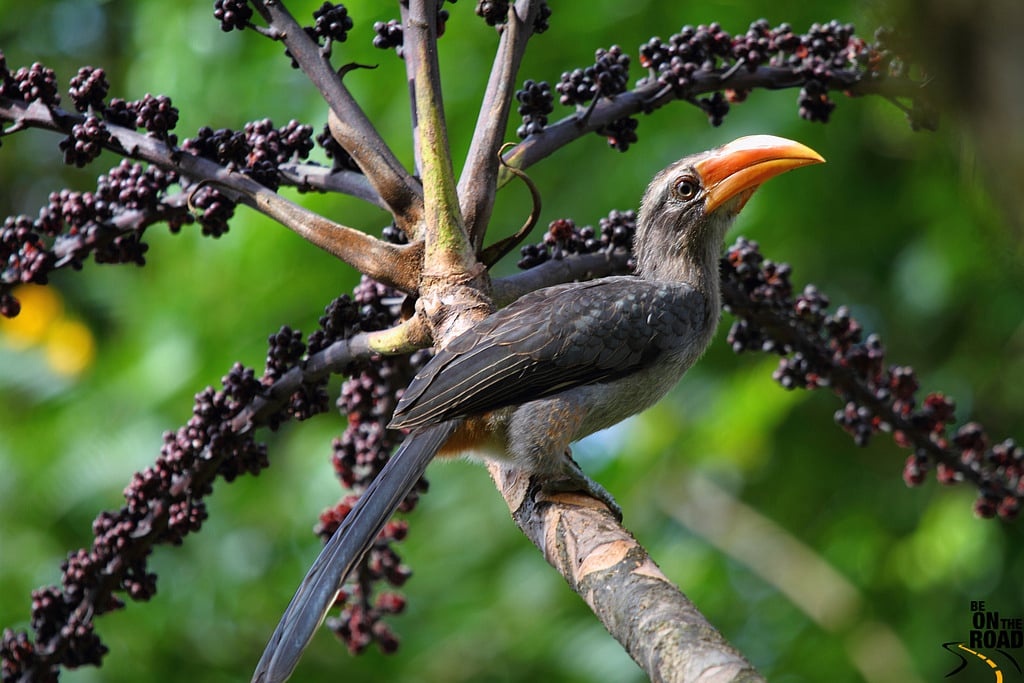
Dr Sethi was also happy to note that while raptors are generally doing badly, some—such as the booted eagle, the greater spotted eagle and the oriental honey buzzard—appear to be doing fine.
However, what Dr Sethi finds the most heartwarming is the many partnerships and collaborations which have made this report possible: “The report is a celebration of citizens’ science, of the large critical mass of avid, passionate amateur birders. It tries to untangle the messy web of ‘why?’ It also shows how important it is to appreciate the common and the everyday—because what’s here today may be gone tomorrow.”
The next flight of steps
As concerning as the report’s findings may be, it also recommends actions to be taken to achieve improved conservation outcomes.
Research towards filling knowledge gaps is essential, as well as an enabling policy environment and close coordination among various stakeholders (local communities, government departments, policymakers, research institutions, funding agencies and corporations) are vital.
Conservation action plans are needed for all 178 ‘high priority’ species. Many of these—including the sarus crane, the black-necked stork and the great grey shrike—largely exist outside protected areas. These landscapes, not managed for conservation, are nevertheless vital for the future of our birds. Policy options and incentives are needed, particularly for production areas like coffee plantations and agriculture in dryland areas and the Gangetic floodplains, to take a bird friendly path.
Policies aside, how can a layperson help?
Sethi suggests: (a) work with experts to participate in ongoing monitoring programmes, and design surveys and documentation projects for your own colonies and campuses; (b) Keep a lookout for birds and nature around you; (c) engage with local communities — visit and support community-based, rural bird tourism ventures, support training and mentoring of rural youth, volunteer for bird conservation; and (d) grow and consume chemical-free/low-chemical produce.
Dr Jayapal said that citizens can ensure their personal gardens (even as small as balcony gardens), society greens and neighbourhood parks are bird-friendly by (a) not using pesticides; (b) maintaining a good mix of native wild herbs, grasses, creepers, shrubs and trees; and (c) setting aside mini wild patches to help bird diversity at least in urban areas.

***
Recently, while in Pune, in the middle of upcoming high-rises, I noticed a small patch of millets. As I watched, a flock of birds landed in a flurry. Flummoxed initially, some rose-tinted flutters amongst them gave away their identity — common rosefinches, some of our beautiful winter visitors, most likely having arrived on our Subcontinent after a long journey all the way from Scandinavia, with longish stops on the way.
I immediately checked their status in the SOIB. They are on the decline, per the current annual trends. Rather than getting saddened, the small patch of millet—that seemed so part of the urbanisation around it—spelt hope to me.
Peeyush Sekhsaria, trained as an architect and geographer, is an amateur naturalist with a keen interest in birds and conservation. Some of his work can be seen on www.peeyushsekhsaria.com
The full text of the 2023 State of Indian Birds report can be found below:
Follow us on: Facebook, Twitter, Google News, Instagram
Join our official telegram channel (@nationalherald) and stay updated with the latest headlines

